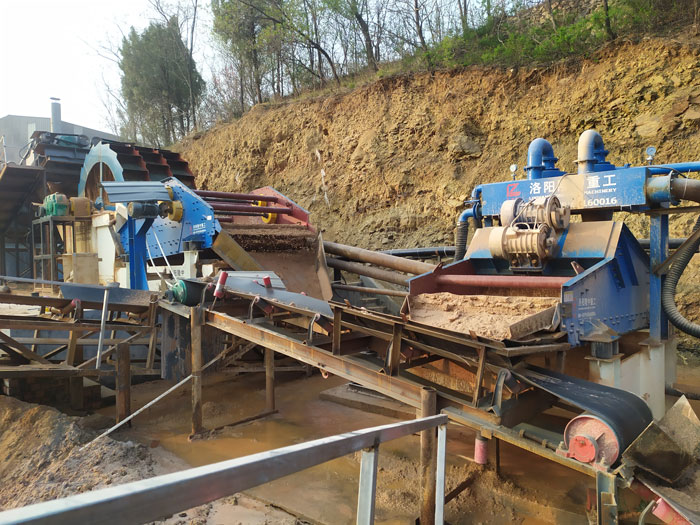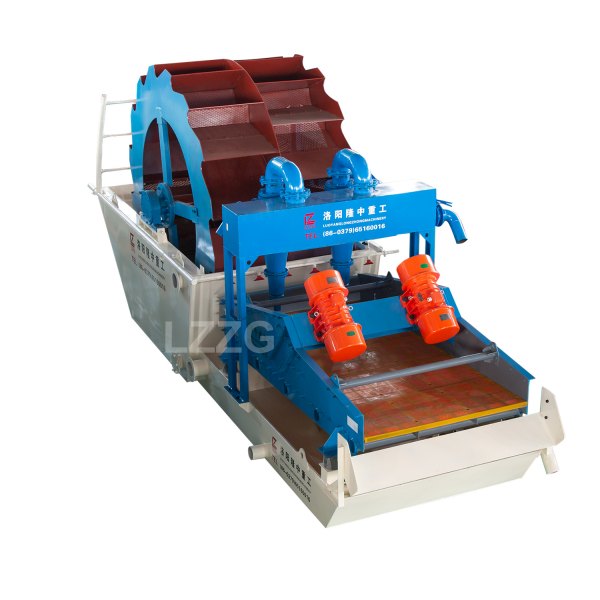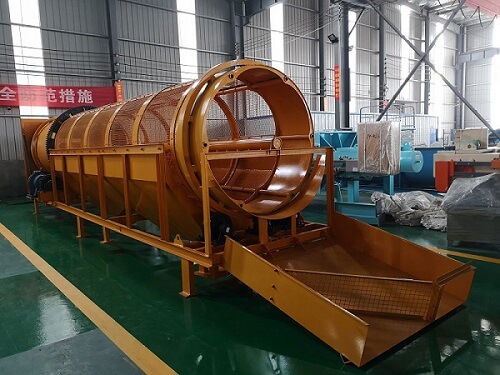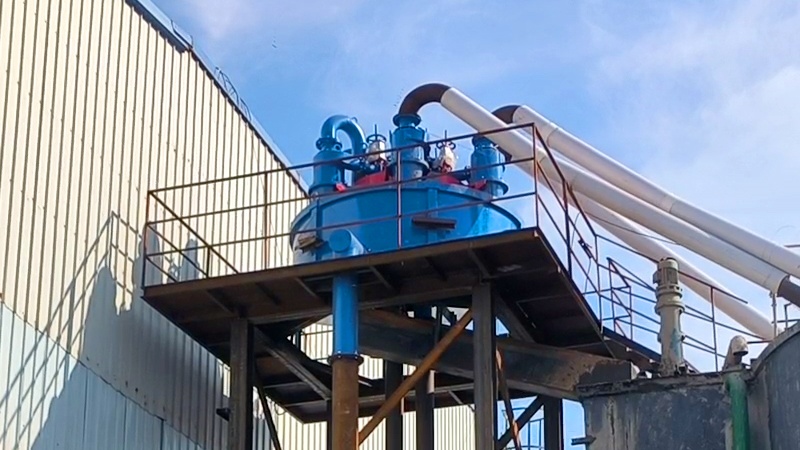Vibration frequency, screen inclination of the vibrating screen
 April.27,2019
April.27,2019
Vibration characteristics include vibration frequency, amplitude, vibration direction angle, and screen inclination. If these parameters are set incorrectly, it will affect the working efficiency of the vibrating screen. The correct way is:
1. Screen angle α The angle between the screen surface and the horizontal plane is called the screen angle. The size of the dip is closely related to the throughput of the screening equipment and the screening efficiency. When the inclination angle is increased, the throwing strength of the material on the sieve will be increased, so that the forward movement speed of the material on the sieve surface is accelerated, so that the treatment amount of the vibrating screen is increased, but the residence time of the material on the sieve surface is shortened, and the opportunity for screening the sieve is reduced. , thereby reducing the screening efficiency. On the contrary, the throughput is reduced and the screening efficiency is improved. In order to control the screening efficiency of the vibrating screen to a relatively ideal range, the screen inclination angle of the circular vibrating screen is generally between 15-25°, and the screen inclination angle of the linear vibrating screen is between 0 and 8°.
2. The angle between the vibration direction angle β vibration direction line and the upper screen surface is called the vibration direction angle. The larger the value of the vibration direction angle is, the shorter the distance moved by the material is, and the slower the movement speed of the material on the screen surface, the material can be fully sieved, thereby obtaining a larger screening efficiency. The smaller the value of the vibration direction angle is, the farther the material throws and advances each time. The faster the material passes through the screen surface, the higher the processing capacity, but the material cannot be fully sieved. Therefore, the vibration direction angle should be reasonably selected. For difficult-to-screen materials, the vibration direction angle should be taken as a large value. For easy-screen materials, the vibration direction angle should be small; in general, the vibration direction angle of the circular vibrating screen is 90°. The vibrating direction angle of the linear vibrating screen ranges from 30 to 60°, often 45°. This value not only has good performance for various screening but also obtains the best moving speed and high productivity.
3. The amplitude A amplitude increases, the mesh plugging phenomenon will be greatly reduced, and it is also conducive to the stratification of materials. However, too large amplitude is also destructive to the device. The choice of amplitude is based on the particle size and nature of the material being screened. In general, the larger the vibrating screen size, the larger the amplitude selected. When the linear vibrating screen is used for classification, the amplitude is slightly larger; when used for dehydration and deliming, the amplitude should be smaller. When the particle size of the treated material is large, the amplitude should be correspondingly increased; when the particle size of the treated material is small, the amplitude should be smaller. Usually, the amplitude of the linear vibrating screen is A=3.5~6mm.
4. The increase of vibration frequency ω vibration frequency can increase the number of times the material beats on the screen surface, which increases the probability of material permeability. This is helpful for speeding up the material screening speed and improving the screening efficiency, but it is too high. Reduce the life of your equipment. For larger particle sizes, use larger amplitudes and lower frequencies; for finer particles, use smaller amplitudes and higher frequencies.






